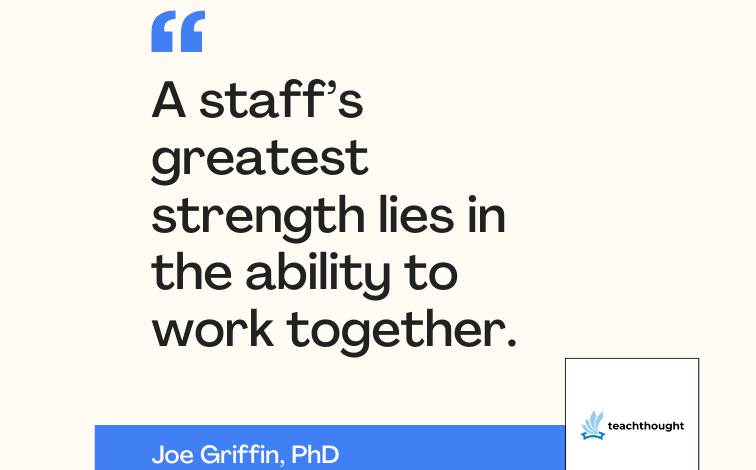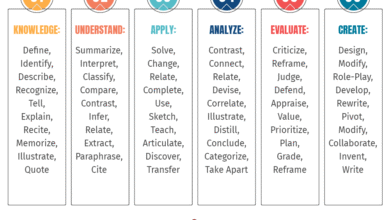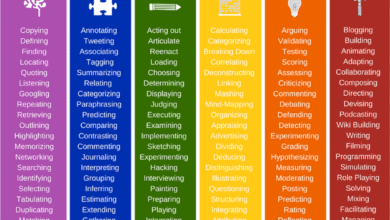How To Work Together To Improve Teacher Principal Relationships –

Abstract
Collaboration between teachers and principals is essential for creating thriving educational communities that enhance student achievement and teacher performance. This article explores the transformative power of a collaborative, unified approach, emphasizing the need for intentional, purpose-driven collaboration. It outlines strategies and principles for fostering a culture of mutual respect, trust, and shared vision, highlighting teachers and principals’ critical roles in student success.
By addressing the current challenges in education, promoting professional development, and prioritizing emotional well-being, this article provides a comprehensive guide for educators committed to bridging the gap between teachers and principals. Through data-driven decision-making and a relentless pursuit of excellence, educators can create a legacy of success that inspires future generations. This call to action encourages superintendents, teachers, and principals to embrace the power of collaboration, striving together to transform the educational landscape and build a brighter future for all students.
Transform Education By Building A Legacy Of Teacher-Principal Partnership
contributed by Joe Griffin, PhD
One truth in education remains consistent: collaboration breeds success. The relationship between teachers and principals is pivotal in shaping the future of our schools and the success of our students. The profound impact of a collaborative approach on educational communities is explored in this article. Crafted from years of experience, research, and reflection, A spirit of systemic collaboration that stretches beyond traditional boundaries and fosters a culture of excellence in schools is what we desire for our schools.
The Power of Collaboration
The journey toward true begins with envisioning desired outcomes for students and staff. Establishing a team-focused approach is essential, as teamwork drives success. To build such teams, school leaders can implement regular collaborative planning sessions, facilitate peer learning communities, and create shared spaces where teachers and principals can exchange ideas.
The goal is not merely to gain knowledge but to create a thriving, collaborative community that nurtures the potential of every student and adult. Implementing structured goal-setting meetings and mutual accountability frameworks will help both teachers and principals move from buy-in to ownership, leading to meaningful and sustainable collaboration.
Collaboration is not a new idea, but its application in education has often been surface-level, failing to peel back the layers associated with the process of purposefully creating a culture of collaboration. True collaboration requires a shift in mindset, an intentional effort between teachers and principals to understand the value of their partnership and commit to working together towards common goals.
Creating a Culture of Collaboration
The current state of education presents numerous challenges, but also immense opportunities to make huge gains in student achievement and teacher performance. A collaborative culture where teachers and principals work closely is crucial for overcoming these challenges. Instituting regular professional development workshops focused on collaborative strategies,
The Need for Unified School Improvement
Often, teachers and principals face challenges in isolation, missing opportunities for growth, improvement, and empowerment. By unifying their efforts, a collaborative school model can emerge where all staff members contribute to a shared vision of success. Encouraging co-planning sessions, interdisciplinary projects, and regular check-ins can facilitate this unity. Furthermore, promoting a school-wide communication platform will ensure that all stakeholders remain informed and engaged, breaking down silos and fostering a truly collaborative environment. Performance for all increases within a collaborative school model.
One of the most important results of collaboration is the mutual growth that it fosters. When teachers and principals work together, they grow together and learn from each other, share best practices, and develop a deeper understanding of their respective roles. This collaborative spirit extends beyond the classroom, impacting the broader school community and contributing to a more cohesive, effective, and comprehensive educational system.
Empowering Teachers and Principals
Recognizing and nurturing leadership potential in every teacher is fundamental to fostering collaboration. Teachers must be seen as leaders, capable of shaping the educational landscape. School leaders should implement leadership development programs, offer opportunities for teachers to lead initiatives, and create platforms for teachers to share their expertise with peers. This approach ensures that teachers feel valued, respected, and motivated to contribute to school improvement, enhancing collaboration with principals.
Professional Development and Emotional Well-Being
Continuous learning is a cornerstone of professional development. Educators should embrace the idea of lifelong learning, constantly seeking to improve their craft and adapt to new challenges. To support this, schools should provide ongoing training opportunities, facilitate peer observations, and create professional learning communities that encourage educators to share best practices.
Equally important is the focus on emotional well-being. Social-emotional learning (SEL) principles are integral to maintaining a positive, productive mindset. Introducing regular wellness activities, offering access to mental health resources, and building a culture of support where teachers feel safe to express their needs can help create a balanced and healthy work environment.
See also Well-Being
By prioritizing emotional well-being, teachers can perform at their best, leading to better outcomes for students. Principals must recognize this and provide the necessary support to create a balanced and healthy work environment in which everyone performs at consistently higher levels
The Impact of Data-Driven Decision Making
Data serves as a powerful tool that can enhance instructional practices and improve student outcomes. Schools should establish data teams, comprised of teachers and administrators who regularly analyze student performance, attendance, and behavior data. By engaging in data-driven decision-making, educators can develop targeted strategies for improvement, celebrate successes, and identify areas for growth. Additionally, providing training in data literacy and interpretation will equip all staff members to use data effectively in their instructional planning and collaboration efforts.
The collaborative analysis of data also strengthens the bond between teachers and principals. It provides common language and goals, fostering a sense of unity and purpose. This collaborative effort is essential for creating a culture of excellence that spreads quickly through the school community. The impact of data-driven decision-making affects student and adult attendance, test scores at all levels, observation feedback for continuous improvement, graduation rates, and more.
Striving for Excellence
Striving for excellence is a continuous journey that requires commitment from educators to grow and improve. Establishing a culture of reflective practice, where teachers and principals regularly evaluate their performance and set goals for improvement, can foster this journey toward excellence. Incorporating strategies such as peer feedback, coaching sessions, and ongoing professional development will help educators maintain a high standard of excellence in their work.
Excellence in schools is attainable through engaging instruction, positive energy, and a student-centric mindset. It requires a commitment to personal and professional integrity and a willingness to embrace challenges as opportunities for growth. By fostering a culture of collaboration, teachers and principals can inspire each other to reach new heights and create a legacy of success.
The Call to Action
In conclusion, “Transform Education by Building a Legacy of Teacher-Principal Partnership” is not just an article; it is a roaring call to action. It challenges educators to rethink their approach to collaboration, to rethink management of issues in schools, and to commit to creating a culture of excellence in schools.
Superintendents must encourage teachers and principals to improve teacher-principal collaboration techniques, to engage in meaningful discussions about its content, to implement its principles in daily practice, and to create a culture of systemic collaboration—collaboration at all levels to boost student and educator performance.
Principals and teachers must simultaneously work to improve relationships and results. A staff’s greatest strength lies in the ability to work together. Collaboration is not just a strategy; it is a mindset that empowers educational communities to achieve more together. Together, we can build a legacy of excellence that will inspire future generations and transform the educational landscape.
Empowering educational communities is not just about improving test scores or achieving accolades; it is about creating a better future for our students. It is about ensuring that every child, regardless of their background, can succeed. It is about fostering a culture of appreciated diversity, inclusion, and respect. By working purposefully together, teachers and principals can make this vision a reality.
Embrace the power of collaboration, strive for excellence, and create a brighter future for our students. Collaborate more intentionally and with more intensity.
Source link



